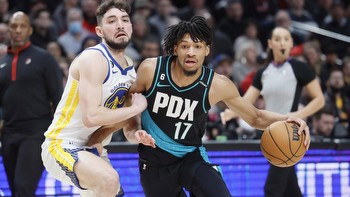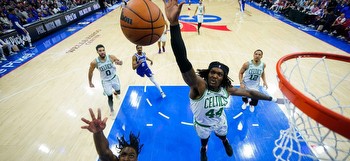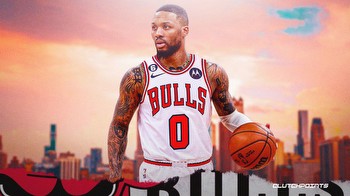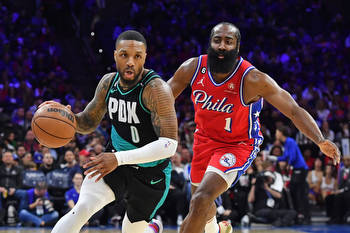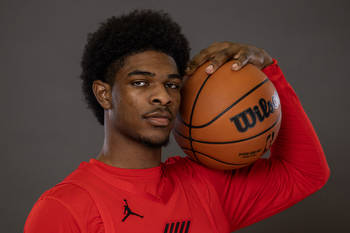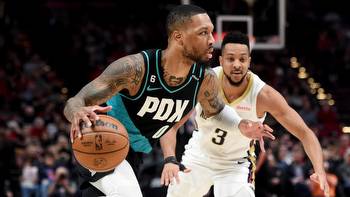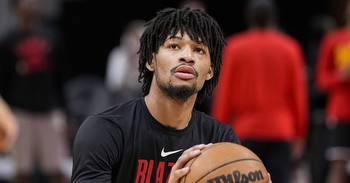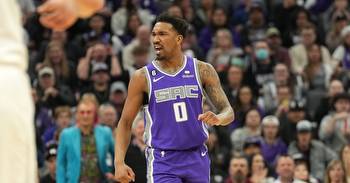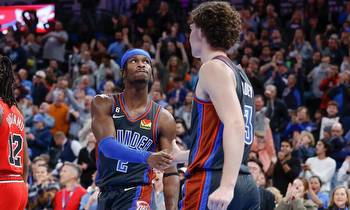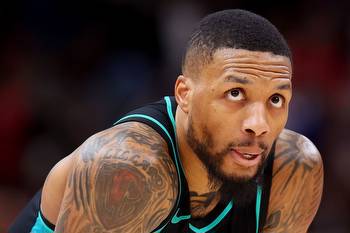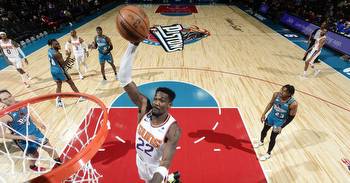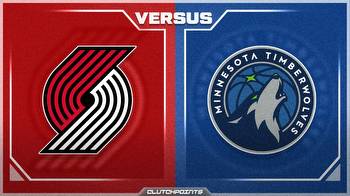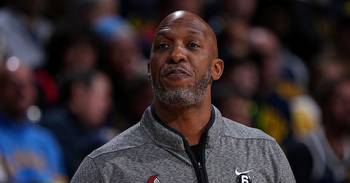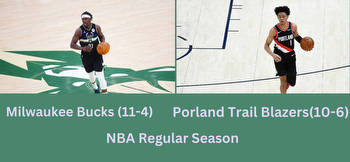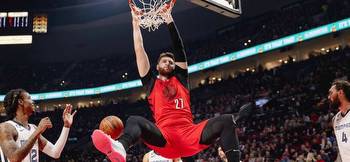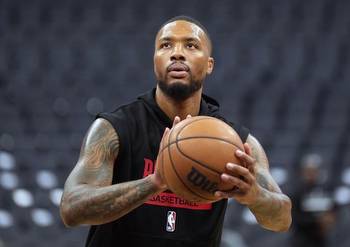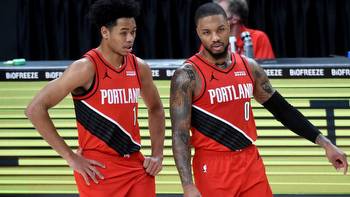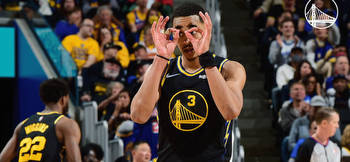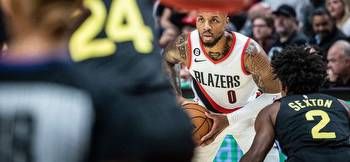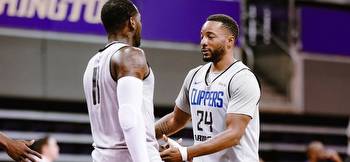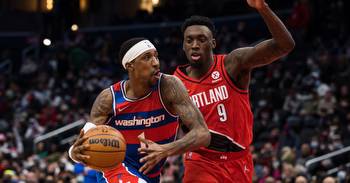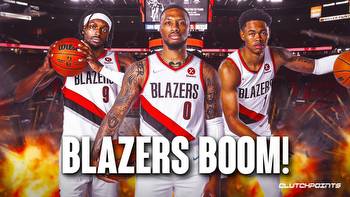Can the Blazers Escape the Middle With a Trade?
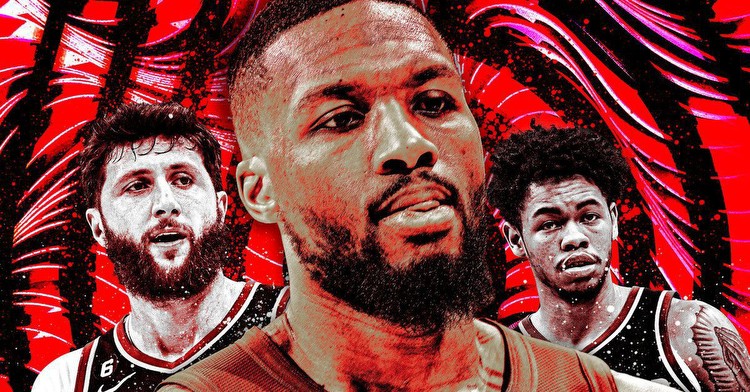
The Portland Trail Blazers are just two games back from the no. 6 seed in the West—and a guaranteed playoff spot—and just two games away from the sixth-worst record, and higher lottery odds. In other words, they’re once again stuck in the middle. Same as it’s always been.
But rather than blow their core up and gamble in the draft lottery, a recent report by Bleacher Report’s Chris Haynes says Portland general manager Joe Cronin remains committed to building a contender around Damian Lillard, who is averaging 30.4 points on career-best scoring efficiency. But Dame still needs more help around him. At 24-26, with the fifth-worst defense in the league, the Blazers currently don’t even qualify for the play-in tournament.
A few days before Haynes’s report on the Blazers, I asking what the Blazers should do: blow it up, stand pat, buy, or sell. More than 50 percent of over 18,000 respondents said Dame should be dealt:
Years ago, before the draft lottery changed to flatten the best odds, I would have voted for the Blazers to blow it up and rebuild too. But the rules have changed. In all four drafts with the new odds, at least one team with the seventh-to-11th-best odds has moved into the top four. Victor Wembanyama and Scoot Henderson might headline a strong 2023 draft class, but it’s so deep that the Blazers could add a talented player in the late lottery (preferably a versatile wing) if they happen to miss the playoffs. Even if the best prize is still at the top of the draft, teams don’t necessarily need to tear down to build back up.
I voted that Portland should buy and do what it can to win with Dame. The championship race is as open as it has been since Lillard became one of the NBA’s premier guards. There’s no superteam. No juggernauts. No heavy favorites. Not yet, at least. Just a bunch of flawed teams like Portland that can fantasize about making a run because they’re led by an All-NBA talent. Everything Haynes reported about Portland is consistent with what I’ve heard anyway: Even if there is logic to rebuilding, Portland still wants to win with Dame. But that doesn’t mean it will be easy. The Blazers are currently short on trade assets and have a lot of holes on the roster.
So, what do the Blazers do? Here are four questions the Blazers need to address to get out of the middle and into the postseason:
1. What do the Blazers need most?
Jusuf Nurkic has become the Blazers’ weakest link. The 28-year-old has lost a step following a long list of injuries. His effort and intensity waver too. Diminishing athletes must always compensate with heart, but he fails to contest shots, gets outrebounded, and mopes around the court.
Last week against the Lakers, Thomas Bryant zoomed by Nurkic on drives to the rim. Days later, Jazz rookie Walker Kessler outhustled him off the floor early before Lillard saved the day and dropped 60 points. On Monday against the Hawks, Nurkic put in more effort than he has shown in a while, but Clint Capela still ripped down seven offensive boards in the first half in his presence.
Blazers head coach Chauncey Billups has started favoring backup big man Drew Eubanks in close games. Eubanks provides more consistent energy, but he’s smaller, so Portland is even weaker on the glass. The pros tend to outweigh the cons, though. At this stage of his career, Nurkic is an ineffective rim deterrent due to his lack of quickness and verticality. Teams target him, and he’s averaging a career-high 3.7 fouls per game (exempting the eight games he played in 2019-20). Now that he’s also dealing with a calf injury, his defense has worsened.
The Blazers added wings like Jerami Grant and Gary Payton II to provide more versatility alongside Josh Hart and Nassir Little. But Billups can’t play his preferred aggressive hedging or switching schemes with Nurkic on the floor. If he were a dominant interior presence like Brook Lopez, it’d be an acceptable strategy to drop their bigs as often as they do. But Nurk’s best defense is just being 7 feet tall.
Eubanks is also a much better fit on offense. Of the 44 bigs to attempt at least 50 shots in the restricted area, Eubanks ranks second in field goal percentage (83.8 percent), behind only Jericho Sims (84 percent), according to Second Spectrum. This makes him a prime target for both Lillard and Anfernee Simons. In contrast, Nurkic ranks second to worst at the rim (60.3 percent), ahead of only Isaiah Hartenstein (57.7 percent). Nurkic and Eubanks are at literal opposite ends of the spectrum, and Nurkic clogs space because he demands more touches.
Nurkic records 4.9 post-ups per game, the sixth most in the NBA. But he is by far the least efficient high-volume post player. He doesn’t draw double-teams. He doesn’t score effectively. He wastes possessions.
Credit should be given to Nurkic for trying to improve as a shooter. He’s made 39.4 percent of his 3s this season. But defenses don’t respect his shot, even after he started the season hot. He made only 30.2 percent of his 3s in January. The push to turn Nurkic into a shooter has largely served as a reminder of what the Blazers truly need: a big that is a threat from the perimeter and allows them to play their scheme on defense.
Nurkic has had a good run in Portland, but if the Blazers are serious about winning anything meaningful with Lillard, the future can’t include him.
2. Where are all the centers?
Nurkic’s trajectory in Portland is similar to CJ McCollum’s in that CJ was vital to the Blazers’ success for so long, but ultimately, both parties needed to move on to grow. The difference is Portland had a built-in replacement for McCollum in Simons, who is averaging a career-high 21.6 points this season. Eubanks has outplayed Nurkic, but he’s not the long-term answer at center. The Blazers would need someone better to move off Nurkic.
Unfortunately for them, there just aren’t a lot of options. Myles Turner just re-signed with the Pacers. Deandre Ayton hasn’t met expectations for the Suns, nor does he shoot 3s well. The Wizards haven’t shown an interest in rebuilding, so Kristaps Porzingis likely isn’t available, and he’s injury-prone anyway. Karl-Anthony Towns isn’t trade eligible before the deadline. And the Blazers just comfortably defended the Hawks’ John Collins by putting smaller players on him, and he’s not a defensive anchor either.
As shaky as Nurkic has been, there aren’t a lot of options out there besides someone like Jakob Poeltl or Mo Bamba. Poeltl is the better rim protector of the two and a better player than Nurkic overall. Bamba provides better shooting but is unproven in a winning context. Neither of them are guaranteed to move the needle on Portland’s defense from the bottom of the league to somewhere near the middle.
3. Is the Blazers’ backcourt set?
Nurkic might not be the same anymore, but it would be unfair to place all the blame on him. It’s difficult for a team to contain penetration with two tiny defenders on the perimeter who offer no resistance when opponents drive into the paint.
Lillard is small. So is Simons, and he hasn’t shown much willingness to consistently lock in either. Five years ago, I wrote that the Blazers should break up Lillard and McCollum because they were too small on defense. But Portland was reluctant for many years because Lillard never wanted to part ways with McCollum, and Neil Olshey was unwilling to break them up.
Simons is just 23 years old, so he might not be close to his individual ceiling. But is the ceiling on Portland with Dame and Ant any higher than it was with Dame and CJ?
In last year’s McCollum trade, the Blazers added Josh Hart, an energetic defender but a hesitant and shaky perimeter shooter. If he were a reliable marksman, he’d be a perfect fit, which was the logic behind the Blazers using their lottery pick on Shaedon Sharpe, an athletic wing with no fear as a scorer. But Sharpe, at just 19, plays like he’s blindfolded on defense. If only Hart and Sharpe could do the Dragon Ball Z Fusion Dance.
What the Blazers have around Dame in reality is a too-small scoring partner in Simons, an undeveloped wing in Sharpe, and an unwilling shooter in Hart. All of them should be available for trade if the return is right. For Hart, that’s probably a smaller deal with a team like Utah for Malik Beasley and Kelly Olynyk. Moving Hart would also open minutes for Nassir Little, a big-bodied wing having a career-best season. For Simons or Sharpe, a return would have to include an All-Star-caliber talent.
The best player available at the deadline might be OG Anunoby, who The Athletic’s Shams Charania reported on Tuesday has officially been made available by Toronto. OG is an ideal fit for Portland. He’s one of the league’s best defenders, he’s a reliable shooter, and he can do some damage off the dribble against a defense knocked off balance by Dame.
But the Raptors have reportedly been asking for three first-round picks or multiple young players of comparable value. Sharpe has proved plenty this season. And Simons is a bucket-getter who could serve as a replacement for Fred VanVleet, who can become a free agent this summer. Either of them could draw plenty of interest from Toronto if Portland wanted to pursue a deal for Anunoby. And if Portland were to lose Simons, Grant has already shown he can step up when needed as a secondary scorer.
Orlando is reportedly one of the teams interested in VanVleet. Might the Magic also like Simons, who is younger and better aligns with their trajectory? A package including Jalen Suggs, Jonathan Isaac, and Bamba might make sense for Portland. The Blazers would get a defensive stopper in Suggs, who has upside, plus one of the league’s most versatile defenders in Isaac and the aforementioned Bamba. Other compensation in the form of picks and salaries could be haggled, but the structure makes some sense for both sides. But Orlando can get VanVleet for less.
Whether it’s a group of players like that theoretical Orlando package or a single established name like Anunoby from Toronto, there are concepts out there for the Blazers to explore. But it remains to be seen if any big deals are worth doing.
4. What can the Blazers offer as buyers?
The main issue Portland is facing is a lack of tradable assets. In 2021, then–general manager Neil Olshey acquired Larry Nance Jr. for a protected first-round pick that was sent to the Bulls. But the pick was lottery protected every year from 2022 through 2028, meaning the Blazers can’t trade more than one of their own future first-round picks due to NBA rules preventing teams from not having a first in subsequent years.
To trade one of their firsts right now, the Blazers and the receiving team would need to include language specifying the pick would be conveyed two years after the Bulls received the pick owed to them. So if the Blazers made the playoffs this season, the Bulls would get Portland’s 2023 pick, and the other team would get the 2025. However, if the Blazers were to make the postseason every year through 2028, language would have to be included that says the pick would turn into a second-round pick or the obligation would cease. That’s because teams can only deal picks through 2029 right now.
This route gives the Blazers virtually no leverage. It’s an IOU with no guarantee the pick ever conveys to the receiving team, removing them from the bidding war for any player with real value.
Executives around the league have discussed the Nance deal with the Bulls since Olshey made it as if he had no idea how protections work. It handcuffs the franchise’s ability to make moves. But,the Blazers could call the Bulls and offer to make the 2023 pick unprotected, thus freeing their ability to trade all of their future draft picks. Or, the protections could be tweaked so that the 2024 pick becomes unprotected, thus freeing all picks in 2026 and beyond. This would be advantageous to the Bulls, of course. But it would only make sense for the Blazers if there’s an available deal that they really want to do. The risk is the simple fact that the Blazers are so close to having high lottery odds as is and could end up still missing the playoffs and outright losing their pick.
If the Blazers are able to lift protections on their first owed to the Bulls, they could then trade picks in 2025, 2027, and 2029, plus swaps in 2024, 2026, and 2028.
Billups will be under the microscope even more than he already is if the Blazers improve the roster leading up to the deadline. Anything can happen over the next eight days, or Portland will need to wait until the summer. No matter the timing, notable change can only come from courageous transactions made by the front office.
Correction: An earlier version of this story said the Blazers are owed a top-four protected pick from the Bucks in 2025. It was sent to the Pistons in the Jerami Grant trade.


